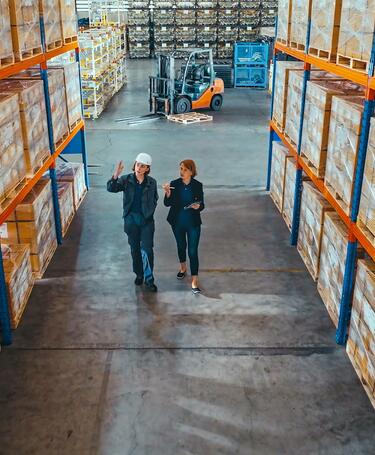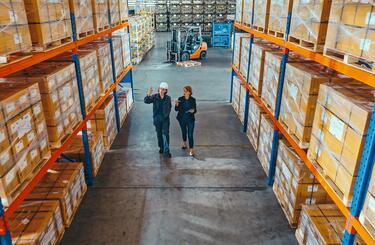
Importance of a robust food safety management system
Progress indicator

Warehouse Quality Supervisor, Adebola Adebileje, examines the importance of a strong food safety management system.
Food safety standards are deployed across the whole supply chain, irrespective of your position in farming, supply, procurement, manufacturing, warehousing, logistics, or retail. For the food manufacturing industry, warehousing plays a critical role in the receiving and storing of raw materials, packaging and finished goods.
ISO’s FSSC 22000 for food safety management systems, which combines ISO 22000:2018 Food safety management systems – Requirements for any organization in the food chain and ISO/TS 22002-1:2009 Prerequisite programmes on food safety – Part 1: Food manufacturing, is used in this assessment, which also covers warehousing (transport and storage activities) in ISO/TS 22002-1:2009 clause 16. Proper implementation of the standard helps improve the quality of food to consumers.
Material storage conditions
ISO/TS 22002-1:2009 clause 16.1 lays the foundations for the right conditions to be met. Materials and products should be stored in clean, dry, well-ventilated spaces protected from dust, condensation, fumes, odours, or other sources of contamination.
Effective control of warehousing temperature, humidity and other environmental conditions should be provided where required by product or storage specifications. Cross-contamination of food from allergenic material, dirt, pest infestation, unhygienic handlers, unkempt logistics vehicles, and poor storage temperature can be avoided when this standard is implemented.
Shelf-life management
The quality of food deteriorates during storage, as environmental and other intrinsic factors (microorganisms, water activity, pH) begin to act on it. The biological and physio-chemical properties of the ingredients can be affected, making the food unsuitable for consumption.
ISO/TS 22002-1:2009 makes mention of FIFO (first in first out) and FEFO (first expired first out) as ways of managing stock inventory in the warehouse. This is to prevent the supply of expired materials to the production plant, which is detrimental to food quality and safety.
A specific date should be required before receiving materials from the supplier, to prevent expiry on the shelf. During warehouse operations, materials about to expire should also be racked at the front, before others, to ensure they are supplied to the manufacturing plant first (following FEFO).
"It is paramount that we pay more attention to this to establish a robust food management system across the supply chain, and FSSC 22002 certainly provides evidence-based practice and further details for food manufacturers to explore."
For proper monitoring, systems should be implemented that include procedures and reports – shared monthly (age analysis) – on the status of materials stored in the warehouse.
Traceability
Food quality and safety are improved when food is traceable from the source to the consumer. ISO 9001: 2015 and FSSC 22002 both deal with traceability, which helps verify food quality by authenticating the origin and composition of foods, prevents the spread of disease, and ensures effective handling of recalls in the marketplace.
Traceability also provides security and transparency for the consumer, while helping the producer use high-quality raw materials and meet regulatory requirements.
The warehouse’s role is to ensure all materials coming into the production plant can be traced. It is the point of first contact between the supplier and the manufacturing plant, so it is the warehouse’s responsibility to ensure materials brought in have the correct details and information.
This information should be well managed during the transfer of materials to the shelves through the use of batch or lot numbers, for example. Radio frequency identification (RFID) technology is also being used for traceability in storage.
Conclusion
In quality, there is a saying that getting it right first time is the way. For a food warehouse, getting it right by having the correct storage conditions, good shelf-life management and traceability will go a long way to ensuring the food (end product) is safe and of good quality.
It is paramount that we pay more attention to this to establish a robust food management system across the supply chain, and FSSC 22002 certainly provides evidence-based practice and further details for food manufacturers to explore.
ISO 9001:2015 does not cover this aspect much, even though food warehouses help drive the quality management system of the organisation. This can be investigated in subsequent reviews.
Preventing food fraud
Both the EU and UN describe the current climate as a global food crisis and warn of ‘serious risk’. It is imperative, therefore, that we maintain vigilance to prevent food fraud, says Forbes Fyfe, Agriculture Supply Chain Technical Account Manager at global assurance specialist LRQA.
Quality World

Get the latest news, interviews and features on quality in our industry leading magazine.


